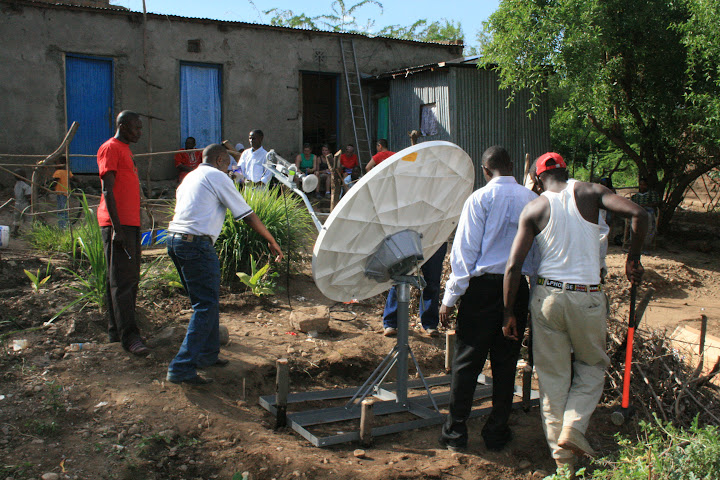I just sat down next to Raphael Marambii, who happens to be the innovations and knowledge management specialist for a small local NGO called ALIN (arid lands information network), at a cyber cafe in Nairobi. As happens in Africa, you get into conversations, and I found out that they have been connecting rural communities via community knowledge centers (sort of rural cybercafes cum libraries / training centers) running solar powered VSAT dishes.

They have deployed a unique prototype solar powered VSAT base station terminal at two of ALIN’s Community knowledge centers, at Marigat and Nguruman, Kenya. The base station is self contained and toughened for remote African rural conditions and requires little expertise to deploy. It’s part of the University of Michigan’s Imagine Africa project.
The question is, “why is this NGO plunking down remote satellite connections in rural Africa?” I asked Raphael just that question, and he tells me that it’s because they strongly believe that information and access to knowledge is what is needed most in these communities. They are trying to get the youth within these rural communities to embrace some of the new social media tools too, like blogging and podcasting.
From what I understand this is a pilot, testing out what happens when a new form of information is freely available within marginalized or disconnected rural communities. Raphael and team have ideas on seeing this become embedded in the community – ranging from helping with eCommerce, to creating new local content, to live video language services available over the connection.
There are two reasons I like this project. First, because it’s being driven by a local NGO, so it has some hopes of making it after the big donors leave. Second, the team is truly trying to think different – they make no bones about how their ways to connect the community to the rest of the world in mutually beneficial ways isn’t “normal”.
The true test however will be found after their 6 months of funding is gone. It costs about 26,000 Shillings ($320) to run one of these each month. Let’s see where this project, and more importantly, the communities are in one year.